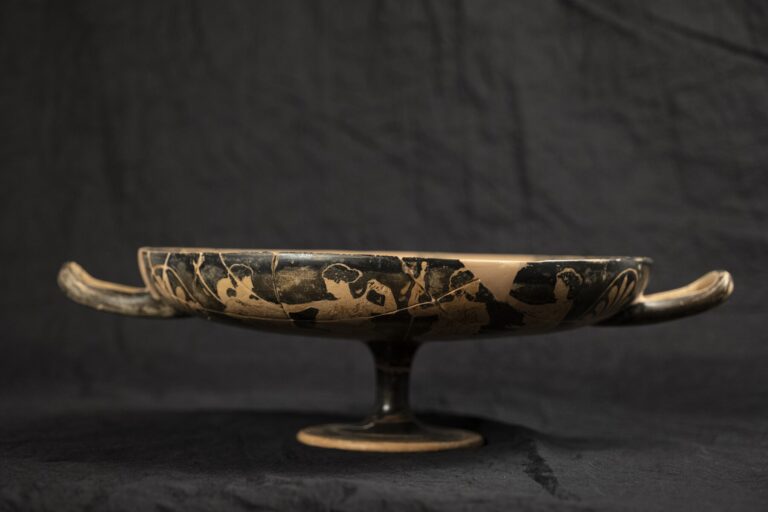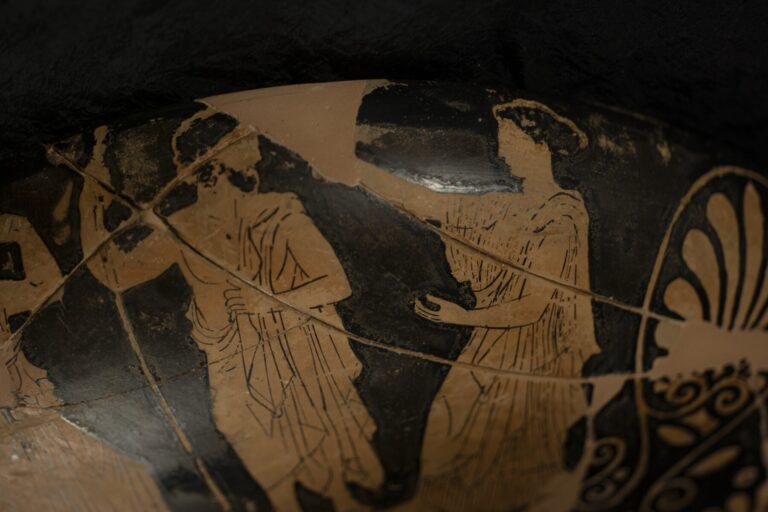

Attic red-figured kylix, Marlay Painter, internal part.
Attic red-figured kylix, Marlay Painter
Around 430 BC
Tomb 264, Valle Trebba
Do you see this shallow round object? Does its shape look familiar to you? Maybe it does. If it might resemble a plate, it was however in Antiquity used for beverage. Its name? Kylix. Looking at the decoration, one could say the images of this vessel are quite violent and indeed they are. On the exterior, is depicted a scene from the Trojan war: Ajax, a Greek warrior, is grabbing a young Trojan princess, named Cassandra, intending to rape her. On the opposite side, another young girl is trying to escape her predator, while a bearded man is watching. On the interior, two women are depicted: Cassandra is leaning towards an altar trying to avoid the axe that Clytemnestra, the wife of king Agamemnon, is lowering against her.
If you are a lover of analysis…
The kylix comes from tomb 264 of the necropolis of Valle Trebba and was produced around 430 BC. The artefact is attributed to the Attic ceramographer called by scholars “Marlay Painter”. Do you think it has another meaning if these scenes are depicted in a cup in an Etruscan necropolis like Spina’s? And why are we referring to death and sacrifice?
Before being placed in a tomb, this cup was perhaps used at Spina by men and women intent on drinking and discussing in an atmosphere of great conviviality. What could they possibly be discussing? The cup itself could have initiated the topic. And who knows? Maybe it will affect you the same, during your visit to the museum.
Violence against women is still a central theme in the news today: if we look at the matter from a modern perspective, the connection between the images depicted on the kylix and the purpose for which this object was made is still not entirely clear. Why would someone in Antiquity choose such stories to “tell”, especially to a group of people inebriated by wine? If it is possible to assume that mythological episodes were told during symposia to entertain guests, the question to ask is: why tell a story of violence? Could it have been used as food for thoughts, aiming at teaching a lesson? For instance, a reminder to the participants of the unfortunate fate that the gods reserved for Ajax and his descendants for committing violence? Or was the iconographic motif simply picked up as a ‘catchy’ one by the painter?
Unfortunately, many of these questions cannot be answered, but one thing is clear: this kylix is a unique object. Because of its importance, it was displayed at the exhibition in Comacchio and will be on display at the National Archaeological Museum of Ferrara for the celebration of 100 years of Spina. This will give you the opportunity to see it in person and try to answer the still unsolved questions!






